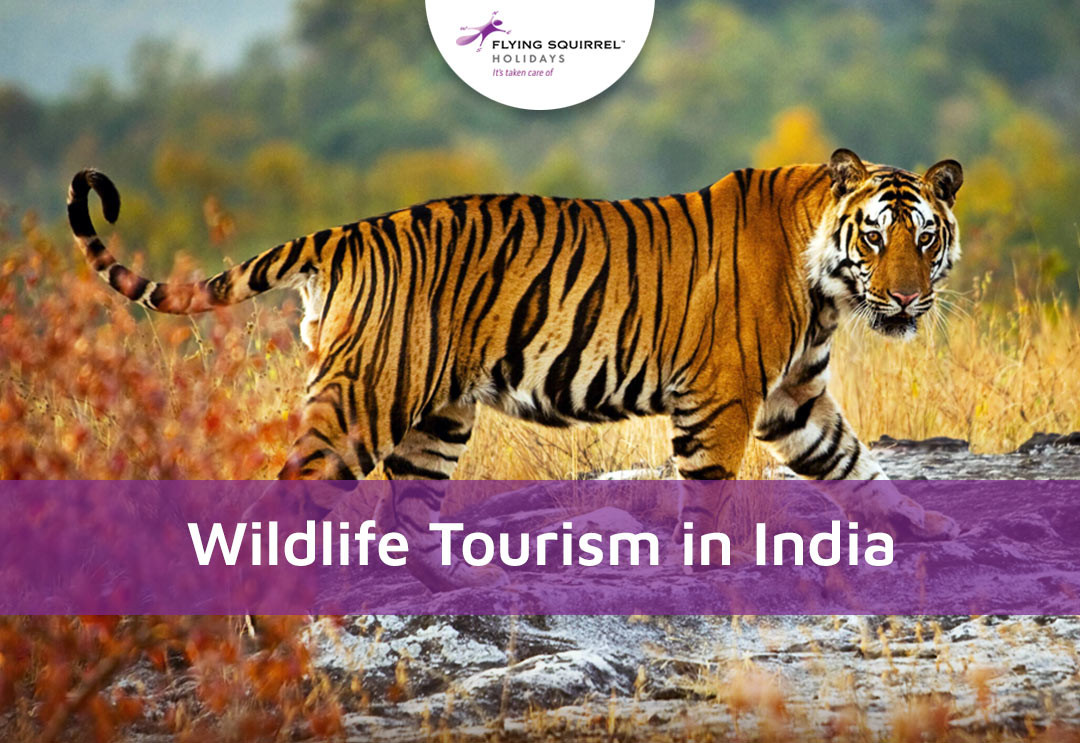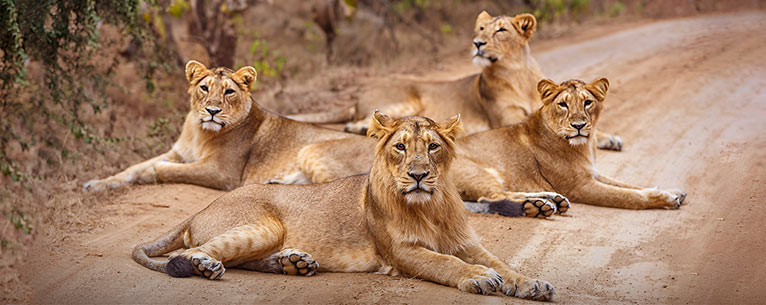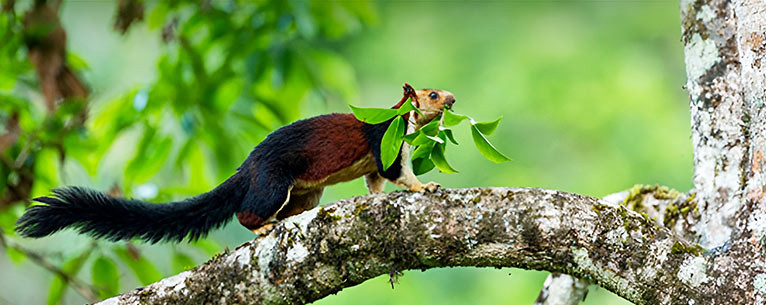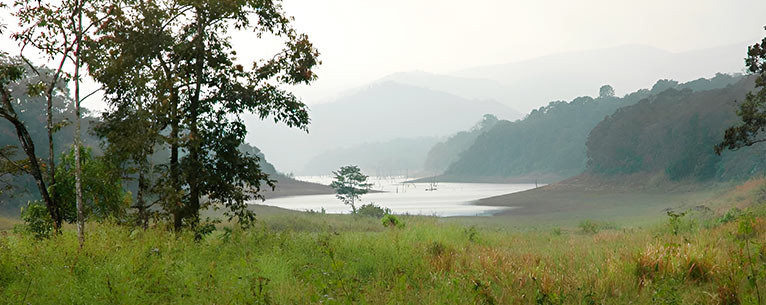Are you curious about the booming growth of wildlife tourism in India and want to explore its natural wonders? SIXT.VN offers comprehensive travel solutions, including convenient airport transfers, comfortable hotel bookings, and expertly guided tours, making your wildlife adventure in India seamless and unforgettable. Let SIXT.VN be your trusted partner in planning your dream wildlife expedition, ensuring a journey filled with breathtaking encounters and cherished memories. From majestic tigers to diverse avian species, discover the unparalleled beauty of India’s wilderness with ease.
1. Wildlife Tourism: Unveiling Nature’s Wonders
At SIXT.VN, wildlife tourism is defined as traveling with the primary aim of experiencing the natural flora and fauna of a specific destination. It’s an immersive experience that emphasizes the importance of conservation and sustainable practices. Wildlife tourism in India is a great opportunity to learn about animal conservation, Indian safaris, and ecotourism.
- It offers a unique chance to witness the intricate balance of ecosystems.
- It highlights the roles of every element in nature, from magnificent creatures to mesmerizing trees.
- India, with its diverse ecosystems, provides an incredible landscape for nature lovers.
 Wildlife Tourism in India
Wildlife Tourism in India
2. Why Is Wildlife Tourism Significant?
Wildlife tourism is vital for several reasons:
- Conservation: Revenue generated often supports conservation efforts, protecting endangered species and their habitats. According to a 2023 report by the Wildlife Institute of India, parks that actively promote wildlife tourism see a 30% increase in funding for conservation projects.
- Education: It raises awareness about the importance of biodiversity and environmental protection. Experiencing wildlife firsthand can inspire a deeper commitment to conservation.
- Economic Benefits: It boosts local economies by creating jobs and opportunities for communities near wildlife areas. A study by the United Nations Environment Programme (UNEP) in 2022 found that wildlife tourism contributes significantly to the GDP of many developing countries.
- Research: It provides opportunities for scientific research, helping us understand and protect wildlife populations.
3. India’s Prominent Wildlife Zones: UNESCO World Heritage Sites
India’s varied climate, biology, and geography have led to several protected forests being recognized as UNESCO World Heritage Sites. These sites showcase unique combinations of biodiversity, geology, and climatic conditions found nowhere else.
3.1. Biodiversity Hotspots Recognized by UNESCO
- Kaziranga National Park: Famous for its one-horned rhinoceros.
- Manas National Park: Known for rare species like the pygmy hog and golden langur.
- Keoladeo National Park: A haven for avian species, previously known as Bharatpur Bird Sanctuary.
- Great Himalayan National Park Conservation Area: Celebrated for its stunning landscapes and diverse flora and fauna.
- Nanda Devi and Valley of Flowers National Parks: Renowned for their breathtaking views and rare species like the snow leopard.
4. How Fast Is Wildlife Tourism Growing In India?
Wildlife tourism in India is experiencing rapid growth, driven by increasing awareness, conservation efforts, and the desire for unique travel experiences. India’s rich biodiversity and mesmerizing forests have been documented extensively throughout history, attracting both domestic and international travelers. According to data from the Ministry of Tourism, wildlife tourism has seen an annual growth rate of 15% over the past decade.
4.1. Key Factors Driving Growth
- Increased Awareness: Documentaries and media coverage have heightened awareness of India’s wildlife treasures. The Oscar-winning documentary “The Elephant Whisperers” has spurred interest in South India’s forests, boosting tourism in regions like Tamil Nadu and Kerala.
- Conservation Efforts: Successful conservation projects, such as Project Tiger, have led to increased tiger populations, making parks like Ranthambore and Corbett more attractive to tourists.
- Ecotourism Initiatives: The rise of ecotourism, which emphasizes sustainable practices and community involvement, has made wildlife tourism more appealing to environmentally conscious travelers.
- Government Support: The Indian government has been actively promoting wildlife tourism through initiatives like the Swadesh Darshan scheme, which focuses on developing tourism circuits around specific themes, including wildlife.
- Accessibility: Improved infrastructure and transportation have made it easier for tourists to access remote wildlife destinations.
- Social Media Influence: Social media platforms have played a significant role in promoting wildlife tourism, with stunning visuals and personal stories inspiring others to explore India’s natural beauty.
4.2 Statistics on the Growth of Wildlife Tourism
| Statistic | Data | Source |
|---|---|---|
| Annual Growth Rate | 15% | Ministry of Tourism |
| Increase in Tiger Population | 30% | National Tiger Conservation Authority |
| Contribution to GDP | Significant | United Nations Environment Programme (UNEP) |
4.3. The Economic Impact
The growth of wildlife tourism has a significant economic impact, particularly in rural areas. It generates revenue for local communities through employment, tourism-related businesses, and conservation projects. This economic boost can help alleviate poverty and promote sustainable development.
- Job Creation: Local communities benefit from jobs as guides, drivers, lodge staff, and artisans.
- Revenue Generation: Tourism revenue supports local businesses, including hotels, restaurants, and souvenir shops.
- Infrastructure Development: Increased tourism can lead to improvements in infrastructure, such as roads, communication networks, and healthcare facilities.
- Community Development: Revenue from tourism can be invested in community development projects, such as schools, hospitals, and sanitation facilities.
4.4. Case Studies of Successful Wildlife Tourism Destinations
- Ranthambore National Park, Rajasthan: Known for its tiger population, Ranthambore has seen a surge in tourism, contributing significantly to the local economy.
- Kaziranga National Park, Assam: Home to the one-horned rhinoceros, Kaziranga has benefited from increased tourism revenue, which supports conservation efforts and community development.
- Periyar Tiger Reserve, Kerala: Recognized for its eco-tourism initiatives, Periyar has successfully balanced conservation with sustainable tourism, benefiting both wildlife and local communities.
- Jim Corbett National Park, Uttarakhand: As India’s first national park, Corbett has a long history of wildlife tourism, drawing visitors with its diverse flora and fauna.
- Bandipur National Park, Karnataka: Situated at the meeting point of the Deccan Plateau and the Western Ghats, Bandipur is renowned for its sandalwood forests and diverse wildlife.
5. Exploring North India’s Wildlife Treasures
North India boasts a variety of landscapes, from plains to the Himalayas and the Thar Desert. Beyond cultural experiences, it holds numerous ecological treasures.
5.1. Nanda Devi and Valley of Flowers National Parks
Forming the Nanda Devi Biosphere Reserve, this area is home to over 500 species of fauna, including the snow leopard and Himalayan musk deer, and over 1000 species of plants.
- Nearest City: Joshimath
- Famous For: Stunning views, rhododendrons, snow leopards
- Recommended For: Trekking enthusiasts, couples
- Best Time to Visit: June to September
- Operating Months: May to October
- Accommodation: Camping options, guesthouses
5.2. Corbett Tiger Reserve
 Corbett Tiger Reserve
Corbett Tiger Reserve
Named after wildlife conservationist Jim Corbett, this park has over 52,000 hectares of forests and is home to over 617 plant species, 50 mammal species, and 580 bird species.
- Nearest City: Ramnagar
- Famous For: Tigers, elephant herds, Corbett Falls
- Recommended For: Photography lovers, families
- Best Time to Visit: December to June
- Operating Months: Year-round (fewer permits during monsoon)
- Accommodation: Camping, government guesthouses, resorts
5.3. Great Himalayan National Park Conservation Area
Declared a UNESCO World Heritage Site, this area covers over 90,000 hectares and contains 25 different forest types.
- Nearest Cities: Kullu, Manali
- Famous For: Snow Leopard, Himalayan Tahr
- Recommended For: Dedicated trekkers, photographers
- Best Time to Visit: April to June, October to November
- Operating Months: Year-round (difficult conditions during monsoon)
- Accommodation: Camping only
5.4. Ranthambore National Park
 Ranthambore National Park
Ranthambore National Park
Once a hunting ground, Ranthambore National Park is famous for its tigers and endangered species like the Indian pangolin.
- Nearest City: Sawai Madhopur
- Famous For: Royal Bengal Tiger, Leopard, Indian Pangolin
- Recommended For: Families, couples
- Best Time to Visit: October to March
- Operating Months: January to June, October to December
- Accommodation: Government guesthouses, resorts
5.5. Keoladeo National Park (Bharatpur Bird Sanctuary)
A haven for birds with over 350 avian species, this park is an artificially created wetland.
- Nearest City: Bharatpur
- Famous For: Siberian Crane (winters only), Greater Spotted Eagle
- Recommended For: Families, couples, senior citizens
- Best Time to Visit: August to November
- Operating Months: Year-round
- Accommodation: Government guesthouses, resorts
6. Western India’s Prime Wildlife Destinations
Western India, known for its climate and coastlines, features a range of ecosystems.
6.1. Gir Wildlife Sanctuary and National Parks
 Gir Wildlife Sanctuary and National Parks
Gir Wildlife Sanctuary and National Parks
The last home of the Asiatic Lion, this sanctuary has a rich biodiversity.
- Nearest Cities: Talala, Veraval
- Famous For: Asiatic lion, pangolin, chousingha
- Recommended For: Families and couples
- Best Time to Visit: December to March
- Operating Months: Year-round
- Accommodation: Government guesthouses, resorts
6.2. Kutch Desert Wildlife Sanctuary
Next to the India-Pakistan border, this sanctuary has seasonal saline wetlands and desert.
- Nearest City: Bhuj
- Famous For: Flamingo, rosy pelican, fossil beds, ancient ruins
- Recommended For: Couples, families, history lovers
- Best Time to Visit: October to February
- Operating Months: Year-round
- Accommodation: No accommodations within the Park; resorts nearby
6.3. Netravali Wildlife Sanctuary
 Netravali Wildlife Sanctuary
Netravali Wildlife Sanctuary
Located in Goa, this sanctuary is an important wildlife corridor and home to leopards and butterflies.
- Nearest City: Netravali
- Famous For: Leopards, sloth bear, butterflies
- Recommended For: Couples, friends groups
- Best Time to Visit: June to August
- Operating Months: Year-round
- Accommodation: Government guesthouse, farmstays
6.4. Koyna Wildlife Sanctuary
In Maharashtra, Koyna Wildlife Sanctuary forms the northern half of the Sahyadri Tiger Reserve.
- Nearest City: Satara
- Famous For: Tigers, leopards, Malabar pied hornbill
- Recommended For: Trekkers, friends groups
- Best Time to Visit: June to August
- Operating Months: Year-round
- Accommodation: Variety of accommodations at Satara
6.5. Tadoba Andhari Tiger Reserve
 Tadoba Andhari Tiger Reserve
Tadoba Andhari Tiger Reserve
Maharashtra’s oldest and largest national park, Tadoba is home to a large tiger population.
- Nearest City: Chandrapur
- Famous For: Tigers, leopards, Mugger crocodile
- Recommended For: Trekkers, families
- Best Time to Visit: February to April (birdwatching), April to June (wildlife spotting)
- Operating Months: Year-round
- Accommodation: Variety of accommodations within the Park
7. Eastern India’s Wildlife Tourism Destinations
Eastern India features diverse landscapes, from the plains of Bengal to the hills of Sikkim.
7.1. Sundarbans
The Sundarbans National Park of West Bengal is part of the world’s largest river delta ecosystem.
- Nearest City: Kolkata
- Famous For: Tigers, saltwater crocodiles, lesser adjutant
- Recommended For: Families, couples, birdwatchers
- Best Time to Visit: November to February
- Operating Months: Year-round
- Accommodation: Variety of accommodations within the Park
7.2. Kaziranga National Park
 Kaziranga National Park
Kaziranga National Park
Home to two-thirds of the world’s Indian rhinoceros population.
- Nearest City: Golaghat
- Famous For: One-horned rhino, tigers, elephants, barasingha
- Recommended For: Families, birdwatchers
- Best Time to Visit: November to February
- Operating Months: November to April
- Accommodation: Variety of accommodations within the Park
7.3. Manas National Park
Located on the border with Bhutan, Manas National Park is home to rare species.
- Nearest City: Barpeta Road
- Famous For: Pygmy hog, golden langur, Assam roofed turtle
- Recommended For: Couples, birdwatchers
- Best Time to Visit: November to January
- Operating Months: October to May
- Accommodation: Variety of accommodations within the Park
7.4. Khangchendzonga National Park
 Khangchendzonga National Park
Khangchendzonga National Park
Named after the world’s third highest mountain, this park is home to rare Himalayan species.
- Nearest Cities: Chungthang, Yuksom
- Famous For: Red panda, takin, bearded vulture, stunning views
- Recommended For: Friends groups, couples, birdwatchers
- Best Time to Visit: March to May
- Operating Months: Year-round (heavy showers from June to September)
- Accommodation: Camping with permit, homestays
7.5. Jaldapara National Park
Situated at the Himalayan foothills, Jaldapara National Park is known for its scenery and grasslands.
- Nearest City: Siliguri
- Famous For: Indian rhinoceros, leopard, Bengal florican
- Recommended For: Families, birdwatchers
- Best Time to Visit: January to March
- Operating Months: Year-round
- Accommodation: Camping, guesthouses
8. South India’s Amazing Wildlife Tourism Locations
South India is known for coastlines and lush forests, home to both the Western and Eastern Ghats.
8.1. Bandipur National Park
 Bandipur National Park
Bandipur National Park
Located at the meeting point of the Deccan Plateau and the Western Ghats.
- Nearest City: Chamarajanagar
- Famous For: Tiger, elephant, chousingha, sloth bear, sandalwood forest
- Recommended For: Couples, friends groups, birdwatchers
- Best Time to Visit: May to October (animal sightings), November to April (birdwatching)
- Operating Months: Year-round
- Accommodation: Camping, guesthouses
8.2. Anamalai Tiger Reserve
On the Western side of Tamil Nadu, Anamalai Tiger Reserve has species endemic to this part of India.
- Nearest City: Coimbatore
- Famous For: Tiger, elephant, lion-tailed macaque
- Recommended For: Couples, families, birdwatchers
- Best Time to Visit: May to October (animal sightings), November to April (birdwatching)
- Operating Months: Year-round
- Accommodation: Camping, guesthouses
8.3. Sathyamangalam Tiger Reserve
Part of the Nilgiri Biosphere Reserve, Sathyamangalam Tiger Reserve is the largest protected area of Tamil Nadu.
- Nearest City: Sathyamangalam
- Famous For: Tiger, sloth bear, striped hyena
- Recommended For: Birdwatchers, couples, families
- Best Time to Visit: October to March
- Operating Months: Year-round
- Accommodation: Guesthouses
8.4. Mudumalai Tiger Reserve
Bandipur’s neighbor to the South, Mudumalai Tiger Reserve is part of the Nilgiri Biosphere Reserve.
- Nearest City: Mudumalai
- Famous For: Tiger, leopard, Malabar giant squirrel
- Recommended For: Birdwatchers, friends groups
- Best Time to Visit: March to August (wildlife spotting), September to October (birdwatching)
- Operating Months: Year-round
- Accommodation: Camping, guesthouses
8.5. Periyar Tiger Reserve
 Periyar Tiger Reserve
Periyar Tiger Reserve
Recently awarded as the “Best Managed Tiger Reserve.”
- Nearest City: Kumily
- Famous For: Tiger, lion tailed macaque, Asian elephant
- Recommended For: Birdwatchers, friends groups
- Best Time to Visit: September to April
- Operating Months: Year-round
- Accommodation: Cottages within the Reserve, hotels outside
9. Undiscovered Havens For Birdwatching in India
Birdwatching in India is a delight, with different species across the nation.
9.1. Dr Salim Ali Bird Sanctuary
Named after India’s famous ornithologist, this sanctuary is a mangrove forest on the Mandovi River of Goa.
- Nearest City: Panaji
- Famous For: Spoonbills, pintails, crabs
- Recommended For: Birdwatchers
- Best Time to Visit: June to August
- Operating Months: Year-round
- Accommodation: No accommodations within the Park; hotels at Panjim
9.2. Nandur Madhmeshwar Bird Sanctuary
 Nandur Madhmeshwar Bird Sanctuary
Nandur Madhmeshwar Bird Sanctuary
Maharashtra’s first Ramsar Site, this sanctuary is an amalgamation of lakes and forests around the Godavari.
- Nearest City: Nashik
- Famous For: Black Ibis, Brahminy duck, garganey
- Recommended For: Birdwatchers
- Best Time to Visit: August to October
- Operating Months: Year-round
- Accommodation: Hotels at Nashik
9.3. Nal Sarovar Bird Sanctuary
A wildlife attraction of Gujarat, this sanctuary is a protected lake and marshlands ecosystem.
- Nearest City: Ahmedabad
- Famous For: Flamingo, cranes, cormorants
- Recommended For: Birdwatchers
- Best Time to Visit: November to February
- Operating Months: Year-round
- Accommodation: Cottages within the Reserve, hotels outside
10. Important Note For Wildlife Photographers
Visitors should ensure they have the correct permits from park authorities. Drone photography and camera support equipment require special permits. In the case of drone photography, all aerial vehicles in India must conform to DGCA guidelines.
11. The Importance of Sustainable Tourism and Wildlife Conservation
Wildlife conservation plays a crucial role in developing India’s tourism industry. Sustainable tourism is based around major National Parks, and many parks are developing low-impact tourism activities.
12. Your Wildlife Adventure Awaits with SIXT.VN
Planning your wildlife tourism adventure in India has never been easier with SIXT.VN. We understand the challenges travelers face when arranging a trip, such as language barriers, finding reliable services, and navigating transportation. That’s why SIXT.VN offers comprehensive solutions to make your journey seamless and stress-free.
12.1. Overcoming Travel Challenges with SIXT.VN
- Detailed Trip Planning: SIXT.VN assists in creating personalized itineraries tailored to your preferences and schedule.
- Language and Cultural Support: Our services bridge language gaps and provide cultural insights for a richer travel experience.
- Reliable Services: SIXT.VN ensures access to trustworthy and high-quality travel services.
- Convenient Transportation: We offer hassle-free airport transfers and transportation to tourist destinations.
12.2. Comprehensive Services Offered by SIXT.VN
- Consultation Services: Tailored itineraries to match your interests and schedule.
- Airport Transfer Services: Safe and convenient transportation from the airport to your accommodation.
- Address: 260 Cau Giay, Hanoi, Vietnam.
- Hotline/Whatsapp: +84 986 244 358.
- Website: SIXT.VN.
- Hotel Booking Assistance: A wide selection of hotels to suit various budgets and preferences.
- Tour and Ticket Booking: Expert guidance and reservations for popular attractions in Hanoi and beyond.
- Flight Booking Assistance: Assistance in finding the best flight deals and schedules.
- Hanoi Excursions: Professionally organized and engaging tours of Hanoi.
12.3. Why Choose SIXT.VN for Your Wildlife Tourism Adventure?
- Convenience: Streamlined booking and service arrangements.
- Speed: Efficient solutions for all your travel needs.
- Reliability: Trustworthy services ensuring a smooth travel experience.
- Dedicated Support: Expert assistance throughout your journey.
Ready to embark on your wildlife adventure? Visit SIXT.VN today to explore our comprehensive travel packages, airport transfer services, hotel booking options, and Hanoi tour itineraries. Let us help you create unforgettable memories in the heart of Vietnam!
13. FAQs
13.1. What does wildlife tourism in India entail?
Wildlife tourism in India involves visiting locations to interact with India’s biodiversity, including animals, plants, and the outdoors. It requires permits and paperwork for a safe and hassle-free trip.
13.2. How fast is wildlife tourism growing in India?
Wildlife tourism in India is growing rapidly, fueled by increased awareness, conservation efforts, and a desire for unique travel experiences. The Oscar-winning documentary “Elephant Whisperers” has increased interest in South India’s forests.
13.3. How can wildlife tourism be promoted in India?
Wildlife tourism can be promoted by supporting eco-friendly activities and educating people about India’s rich biodiversity.
13.4. What wildlife is India famous for?
India is famous for charismatic megafauna such as the Asian elephant, Royal Bengal tiger, blackbuck, and Indian rhinoceros, as well as diverse bird species and iconic reptiles.
13.5. What is a popular example of wildlife tourism?
A popular example is a jeep safari in one of India’s many National Parks, which provides a safe way to see wild animals.



